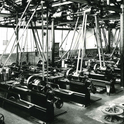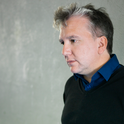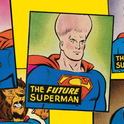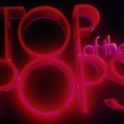The phrase "want-see" started being used in Hollywood in the early 1980s. Other industries closely guard their trade secrets but the US movie studios discovered in the 1970s, with films like Jaws, The Exorcist and Star Wars, that they could create force fields of anticipation around their movies and, in their plain spoken way, they named those force fields "want-see." There, in the breakfast meeting jargon, is the deep connection between wanting and seeing.
Sigmund Freud, Hollywood's unacknowledged patron saint, had the more elaborate word "scopophilia," and in his day what people wanted to see was somewhat different. But, though the man himself was indifferent to movies, apart from the odd western, he would easily recognise what it is in modern cinema that compels people to look at man-eating sharks (Spielberg), the inside of spaceships (Spielberg), the gas chambers at Auschwitz-Birkenau (Spielberg), Omaha Beach (Spielberg) or the destruction of New York.
Nothing has sent the "want-see" pulse racing like the collapse of the World Trade Centre, and people have used Newtonian words to describe it. The television coverage has had a "magnetic" effect. One columnist said that there has been a "gravitational pull" towards the images. Even the more humble "glued to the screen" implies a chemical bond.
Those who argue that our scopophilic epidemic is ignoble can be dismissed. We of course achieve nothing by watching again and again, but indifference would be a much more disturbing reaction. More interestingly, perhaps, two other human compulsions have been at play. Both are part of the Hollywood-Hong Kong action movie formula, but neither is exclusively cinematic.
The first is the attraction of "the broken." This is the child's urge to smash up a teetering Lego skyscraper. By chance, as I write this in an internet cafe, three young men on screens to my right are looking at appalling images of severed hands and a mutilated baby, a distasteful outcrop of the desire to slow down when passing a car accident. It is this terrible attraction of "the broken" that explains everything from the 1990s cycle of Manhattan destruction movies back to neo-classicism and Piranesi's fascination with the fallen stones of the Roman Forum.
A key icon of "the broken" in the last century was the Zapruder footage of John Kennedy being shot. It is another decapitation like the pictures on the screen to my right and the fate of the twin towers. Yet the Zapruder footage fails to gratify the second attraction of the New York television coverage.
That is the attraction of "now." Zapruder had to take his cine-film to the lab and have it processed. His footage says "I saw" rather than "I see" which is, of course, the literal meaning of "video." With video there isn't time to consider. While this can be the reason that television news often isn't very good, it would be wrong to be sniffy about people's need to see footage live and then repeated. The human brain repeats traumatic images after the event, and trauma therapies such as EMDR (Eye Movement Desensitisation and Reprocessing) attempt to dislodge these images when they get stuck.
So what in our western image-based culture will be the equivalent of EMDR? How will people get beyond the "want-see" of September? Which filmmakers will develop these broken, present tense scenes into something lasting, important or recovered, like Elem Klimov's Come and See, the greatest war movie ever made?
It is difficult to imagine an American, apart perhaps from David Lynch, doing so. Despite its regular use of flashbacks, US mainstream movie-making always aspires to the condition of video, the "I see." You can really only understand a scene in an American film by imagining that you are standing at the edge of the action, wanting it to unfold in front of you, with no desire to inhabit the past tense. US cinema's obsession with "the broken" and the now will continue.
Or might the New York attacks change the force fields around images in the US? I went to Sarajevo, during the siege, at the invitation of an improvised underground cinema which wanted me to bring new films on videotape. A selection I prised out of distributors was mostly serious stuff. I was concerned that escapism might have been more welcome. But, although the audience was very mixed-soldiers, shopkeepers, NGO personnel, metalworkers-they all insisted that they didn't want to see Schwarzenegger action movies, and that they were no longer interested in fake violence. Their "want-see" for Hollywood, spectacular violence had dried up.
This was a whole town which was under regular bombardment, not just the shock of a few major attacks over half a day. But is it possible that the mainstream audience in the US-and indeed further afield-will now seek out different, more profound, images? Will the multiplexes, the cathedrals of "want-see," be transformed?
Don't bet on it. The historical precedents are not good. During the second world war, the American public flocked to see Betty Grable musicals. n











